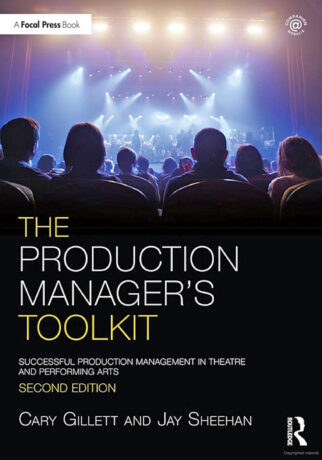
The Production Manager’s Toolkit Second Edition, by Cary Gillett and Jay Sheehan, offers an up-to-date, comprehensive introduction to a theatrical and special event production career for new and aspiring professionals, given by expert voices in the field. The book discusses management techniques, communication skills, and relationship building tactics to become effective and successful production managers. With a focus on management theory, top production managers provide insights into budgeting, scheduling, meetings, hiring, maintaining safety, and more. Through interviews and case studies, production management techniques are explored throughout various entertainment genres including theatre, dance, opera, music, and special events. The second edition includes all new case studies, new chapters, and updated content throughout, showcasing a continued progressive approach to the job and the field. It is filled with references, tools, templates, and checklists, The Production Manager’s Toolkit is an invaluable resource for students of Production Management, Events Management, and Stage Management courses, as well as new and aspiring professionals. The book includes access to a companion website featuring downloadable paperwork and links to other useful resources such as unions, venues, and vendors.
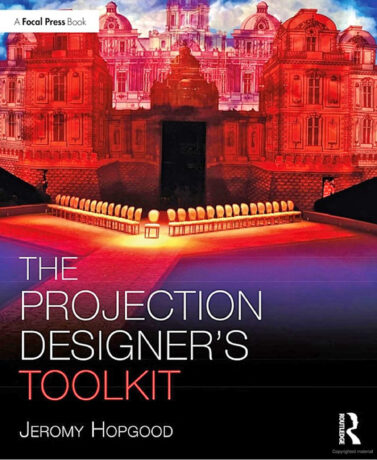
The Projection Designer’s Toolkit, by Jeromy Hopgood, is an insider’s guide to the world of professional projection design, serving as a reference for the planning and execution of each step in the projection design process. The text addresses the design process within the context of a professional projection designer’s workflow, focusing on specific tools of the trade, best practices for communicating your design to collaborators, tips and tricks, determining budget, working with assistants, and more. Featuring interviews with some of the top names in the industry, the book offers an unprecedented insight into the professional projection designer’s process across a wide range of fields, from Broadway and regional theatre to corporate design and music touring. The book also includes in-depth discussion on production process, system design, cue and content planning, content design, digital media fundamentals, media servers, video equipment, and projection surfaces. Additionally, it features hundreds of full-color photos and examples of designer artifacts such as draftings, mock-ups, paperwork, cue sheets, and renderings. Filled with practical advice that will guide readers from landing their first job all the way through opening night and beyond, The Projection Designer’s Toolkit is the perfect resource for emerging projection designers and students in Digital Media Design and Projection Design courses.
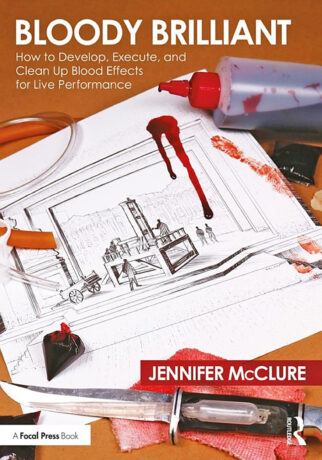
Bloody Brilliant: How to Develop, Execute, and Clean Up Blood Effects for Live Performance, by Jennifer McClure, offers methods and techniques for delivering this special effect on the stage. The world of live theatre presents its own set of unique challenges when creating special effects, particularly blood. There are no cropped-view frames, multiple angles, or reshoots – everything is live and in view of the audience. This book provides helpful insight, information, techniques, and tricks for producing reliable and repeatable blood effects, covering everything from design and budgeting to safety and clean-up. Filled with easy-to-follow descriptions and full-color artwork, this text includes practical examples of blood effect budgets, outlining not just money but also labor needs; a breakdown of the components for making an original blood recipe, as well as reliable, industry-tested recipes; options for dispensing blood to create realistic effects for any budget size; and a comprehensive wash-testing database of over 500 examples of fabrics and blood combinations. Prop managers and builders in professional, educational, and regional theatre are sure to benefit from the tips outlined in this book.
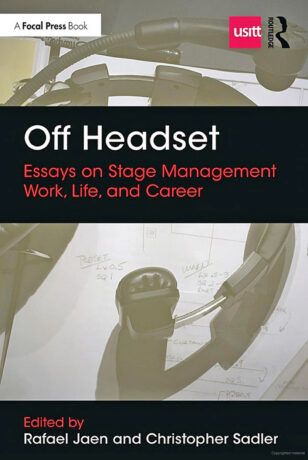
Off Headset: Essays on Stage Management Work, Life, and Career, edited by Rafael Jaen and Christopher Sadler, is a collection of chapters containing essays by a richly diverse group of stage management professionals and educators covering the challenges stage managers face on the job, in their lives, and in their careers. The book starts with the intersectional history of stage managers and the actors’ union. In “Part 1: Work,” the contributors share a wide range of experiences, from regional theatre and Broadway to operas and cruises—and even running with the circus. The essays in “Part 2: Life” explore the relevance of stage managers claiming their identity, their resilience, and practicing self-care. Finally, in “Part 3: Career,” readers receive aspirational and business advice for life in the real world: leadership, networking, unemployment, managing demanding calendars, and career planning. The book ends with a moment of pause during tech—a direct response to the absence endured throughout the Covid-19 pandemic and a tribute to a world that many used to take for granted. Intertwining practical advice with personal anecdotes, Off Headset: Essays on Stage Management Work, Life, and Career is the perfect accompaniment to students studying stage management in a university setting and professionals working in the field.
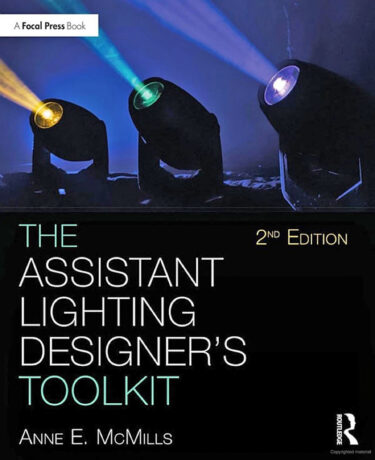
The Assistant Lighting Designer’s Toolkit, by Anne E. McMills, returns in its second edition, unlocking the insider secrets and proven, time-tested methods to succeed as a professional assistant lighting designer. This definitive guide outlines, step-by-step, the daily challenges that assistant lighting designers face during every phase of production, and the solutions for overcoming them. Furthermore, intermingled among the highly detailed paperwork techniques and essential procedures, top industry professionals reveal tips for success in this challenging career. This fully updated second edition features all new advice, real-world stories, and current paperwork examples from over 120 working professionals. It also updates industry practices with case studies from the professionals themselves, such as how to create a video network to record previews for the lighting department; how much printing is done in an increasingly paperless world; how to produce a set electrics package; and how the industry interfaces with cutting-edge technology like remote followspots and pre-visualization software. There are also new lifestyle tips for traveling abroad, negotiating contracts, and dealing with stressful situations. The Assistant Lighting Designer’s Toolkit equips budding assistant lighting designers and students studying lighting design with the insider knowledge they need to achieve the successful career, whether choosing assisting as a career or as a stepping-stone toward design.
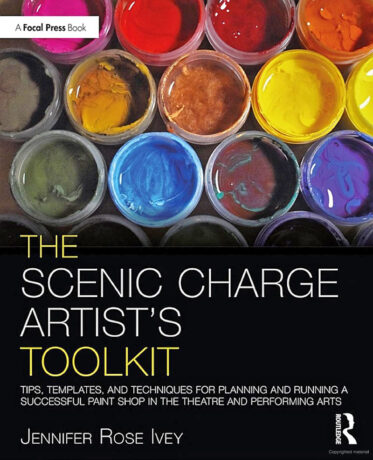
The Scenic Charge Artist’s Toolkit: Tips, Templates, and Techniques for Planning and Running a Successful Paint Shop in the Theatre and Performing Arts, by Jennifer Rose Ivey, is a comprehensive guide to managing a theatrical paint shop. It introduces the many different options available to a scenic charge artist, as well as the fundamental expectations and responsibilities of planning and running a shop. From the pre-production organization, budgeting, sampling, and sealing, to practical lessons in efficiency and shop maintenance, this text provides options to organize a paint shop no matter the size of the shop, show, or company. Filled with templates for labor and time estimation; tips on leadership and collaboration; techniques for painting and planning textures efficiently; and sustainable practices in health, safety, and wellness, this book provides guidance and practices to successfully manage the inevitable changes in theatre planning and production. It also offers tips and reference material on employment options, gaining employment, and excelling in this profession. Written for early career scenic artists in theatre and students of Scenic Art courses, The Scenic Charge Artist’s Toolkit fills in the gaps of knowledge for scenic artists in the budgeting, planning, and running of shops at summer stock, educational institutions, or freelance working environments.


